On the eve of the elections to the European Parliament, the main attention of European politicians and observers is traditionally focused on the prospects of the extreme right-wing parties, for which the campaign itself looks like a victorious march. At the same time, the analysis of the prospects of the left-radical flank demonstrates absolutely opposite trends. Judging by the results of the recent parliamentary and regional elections and the mass of intra-party conflicts, this process did not begin yesterday, but today it is becoming more and more active at jet speed. Certainly, the left-radical parties and politicians will not completely leave the political scene and will still remain in the EP political group “European Union of the Left” (The Left), but it is hard not to notice the serious reduction of their positions: even according to the most optimistic sociological forecasts, the already small group of the European Parliament risks losing 5-8 seats in the new convocation.
With this material Ascolta continues to study the political mood in the European Union against the background of preparations for the next elections to the European Parliament, and also analyzes the prospects of left-radical parties and their leaders to form their own group of influence in the new political realities.
This Content Is Only For Subscribers
Rising from the ashes
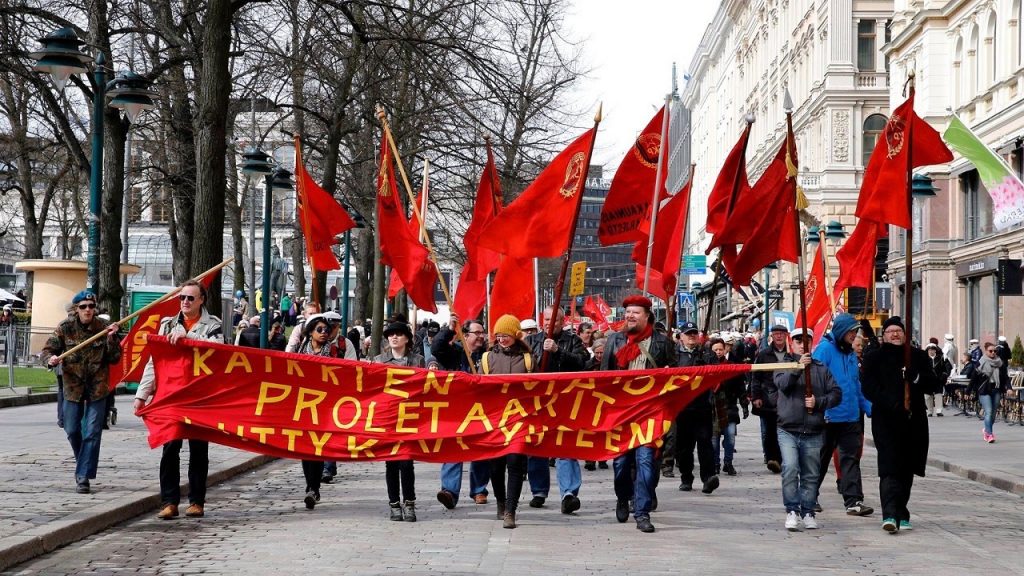
Historically, the left-radical movement has never been unified and monolithic, representing a set of different, sometimes warring parties and organizations. Some of them were low-influential and languished on the political margins, some of them were considered marginal. The most successful left-radical parties in Europe during most of the 20th century were communist parties. However, after the collapse of the USSR and the collapse of socialism in the countries of Eastern Europe, the very existence of left-radical parties in Europe came into question. First of all, this affected the same communist parties, which found themselves in an ideological and organizational crisis. They were forced to revise their ideological heritage and adapt to new political realities. Some of them decided to abandon communist ideology and continue their development as non-communist left-war radical parties.
Examples include the Finnish Communist Party and the Swedish Left Party, the Communists, which changed their names to the Left Union and the Left Party. In Germany, after the country’s unification, the Socialist United Party of Germany (SED) shifted to the position of democratic socialism and was transformed into the Party of Democratic Socialism. In 2007, a new party, the Left, was formed as a result of a merger with the Labor and Social Justice – Electoral Alternative party.
Some communist parties ceased to exist as separate parties and became part of coalitions of left-socialist orientation. For example, the Communist Party of the Netherlands was dissolved in 1991 in order to form a new party, the Green Left, with three other leftist organizations, with ecosocialist positions. Another option is the creation of so-called “broad left” parties. Examples of such parties are the Red-Green Alliance, formed in Denmark on the basis of the Communist Party, the Left Socialist Party and the Trotskyist Socialist Workers Party, or the Portuguese Left Bloc, formed in 1999 as a coalition of three small left-radical organizations – the Trotskyist Revolutionary Socialist Party, the former Maoist People’s Democratic Union and the Revolutionary Front of the Left.
The most successful example of a broad coalition of left-radical parties was the Coalition of the Radical Left (SYRIZA) formed in Greece in 2004, which was transformed into a single party in 2013. It included left-wing parties of Eurocommunist, Maoist, Trotskyist, ecological and left-socialist orientation that disagreed with the orthodox line of the Greek Communist Party. A number of parties – most notably the Communist Party of Greece (PCG) and the Portuguese Communist Party (PCP) – did not find it necessary to seriously adjust their programmatic bases and maintained their commitment to Marxism-Leninism.
In turn, the Czech and Moravian Communist Party (CHRM), the Spanish Communist Party (PCP), the French Communist Party (PCF), the Progressive Party of the Working People of Cyprus (ACEL) and some others have changed their programmatic positions away from a focus on violent means of overthrowing the capitalist order, proclaiming themselves supporters of its gradual reform in the interests of workers. Two former Maoist communist parties, the Belgian Labor Party and the Dutch Socialist Party, established in the 1970s, deserve special mention. While the Belgian Labor Party gradually evolved from Maoism to Marxist-Leninist ideology and then (after 2008) to “reformed” communism, the Dutch Socialists completely abandoned Marxism-Leninism as early as 1991, switching to left-populist, left-socialist positions.
The situation in Eastern Europe is somewhat different. At the moment, only the Social Democratic Union of Macedonia and the Socialist Party of Albania remain influential in this region. Both parties are the successors of the communist parties that ruled these countries in the 20th century. Today these parties have changed their ideology to social-democratic and are members of the Socintern. Rather, their political influence is based on the old party nomenclature that has retained power in these countries. In their economic and Euro-Atlantic foreign policy, they differ little from the liberal-conservative parties that replaced the Communists in Eastern Europe.
In the rest of Eastern Europe, with the exception of the Czech Republic, former communist parties were also transformed into social-democratic parties. At the same time, it cannot be said that their “social-democratization” took place only out of opportunistic considerations and the desire to adjust to the new political reality. Even before the collapse of the socialist bloc, the Communist Parties of Poland, Slovakia, Hungary, Romania and Bulgaria had formed their so-called “reformist wing”. The emergence of these “wings” was connected with the more liberal regime of these countries in relation to the USSR and the Czech Republic, where the reformist wing was hit hard in 1968, as well as the contacts established in the 1970s between the Communist Parties of Eastern Europe and the parties of the Western Socialist International.
The most successful electoral choice for the left-radical parties was the choice of a strategy in which the party would retain elements of its radical identity and difference from social democracy, but at the same time undergo a significant internal ideological and strategic evolution. It is worth noting that not only the left-radicals, but the entire leftist movement was in search of its own identity. Thus, social democrats and socialists began to drift to the right, and their agenda in the 1990s and 2000s became little different from that of centrist and center-right parties. Disillusionment with the Social Democrats led to a decline in their popularity and the emergence of a political vacuum on their left, which, however, was not so easy to fill: the convergence of conservative, liberal and social democratic parties created apathy and a deep aversion to politics among some Western European voters. The austerity crisis of the late 2000s gave rise to a number of social movements, some of which were the immediate precursors of successful left-radical projects such as Podemos in Spain and SYRIZA in Greece.
The Party of the European Left and the EP group “European United Left/Green-Left North”: partners or competitors?

One of the criteria for a party’s belonging to the left-radical family is that the party belongs to one of the inter-party alliances: the transnational Party of the European Left (PEL), the Northern Alliance of Greens and Leftists (NAGL), the Initiative of Communist and Workers’ Parties (INITIATIVA), the European Anti-Capitalist Left (EACL) or the European United Left political group in the European Parliament.
The European Left/Green-Left North group in the EP currently has 38 MPs. It consists of both representatives of the Party of the European Left and of those parties which, for one reason or another, did not wish to join the PEL. The Party of the European Left has 15 votes in the EP political group and is represented by: the Left Party of Germany (German Die linke), which has – 5 mandates, the Greek SYRIZA, which won 4 mandates in the elections to the European Parliament in 2019 (but after the split due to the change of the party leadership in 2023, shared its representation with the “dissenters” who left SYRIZA and created their own ultra-leftist project – “New Left”). Communists from the Progressive Party of the Working People of Cyprus, which is in the PEL as an observer, and the Left Bloc from Portugal have two mandates each. The PEL’s United Left from Spain, the Left Union of Finland, the Red-Green Alliance from Denmark and the Communist Party of Czech Republic and Moravia also have one mandate each. The ambitions of the leadership of the Party of the European Left to unite all tendencies and forces of the radical left under its wing have not succeeded.
Outside the PEL’s influence in the group, there were 23 deputies and such influential European left-radical parties as the French “La France insoumise” (La France insoumise), which has 5 mandates. The founder of this party was Jean-Luc Melanchon, who was at its helm for a long time. The Spanish Podemos has one less mandate. The Greek ultra-left project “New Left” has two deputies each, which emerged due to the split of SYRIZA in 2023. The Irish group Independents for Change and the Portuguese Communist Party also have two deputies. The Swedish Left Party, the Labor Party from Belgium, the Irish Sinn Fein, the Left Republicans and Socialists from France, the Dutch Party for the Protection of Animals, and the Anti-Capitalists from Spain each have one mandate. There are also two other independent MPs from France and Ireland in the group.
The members of the group mainly position themselves as supporters of democratic socialism, less often communism, although almost all of them came from parties that classified themselves in the 20th century as either communists (if we talk about parties from Eastern Europe) or Eurocommunists (denying the Soviet experience of building communism). In their agenda they are in favor of reforming the neoliberal economic model and against the austerity policy in the EU, support the policy of “green transition”, advocate gender equality and protection of the rights of sexual minorities, multiculturalism. The group is now co-chaired by Aubrey Manon of Unconquered France and Shirdevan Martin of the German Left Party, who have been at the helm since 2019.
Positions of ultra-left parties in the European Parliament

The first communist group in the European Parliament, Communists and Allies, was established in 1973. This group included members of the Italian Communist Party and the French Communist Party. In 1989, following the results of the European elections, two communist groups, Left Unity and European United Left, were formed. After the European elections of 1994, the process of further unification of leftist parties began, and the group became known as the Confederation Group of the European United Left (GUE). It included: the United Left of Spain, the Communist Party of France, the Communist Renaissance of Italy, the Communist Party of Portugal, the Communist Party of Greece, and another representative of Greece – “Sina-spismos”. After the enlargement of the EU to include the Nordic countries and Austria in January 1995, the group expanded to include the Left Party of Sweden and the Left Union of Finland. At the same time, the Socialist People’s Party of Denmark reunited with the group and, together with the Swedish and Finnish parties, formed the Northern Green Left (NGL) component within the group. Since then, the group has been called the European United Left/Northern Green Left (GUE-NGL).
The European Left Party has a less long history. It was founded in 2004 as a transnational party. Today, it comprises 25 communist, socialist, labor and left-environmental parties from 17 EU member states. In the process of its creation, the initiators faced significant disagreements between the national member parties. And even the very emergence of PEL did not overcome them, which eventually affected its organizational integrity. In addition to the fact that PEL did not include a number of recognizable left-radical party brands, it did not have a good relationship with the European United Left/Green Left North (GUE-NGL) political group in the Europarliament.
As practice shows, all pan-European parties have a division of functions with their groups in the EP. Conventionally speaking, national parties pay more attention to the development of common policies, while their factions focus on their implementation. The problem of the PEL is that in the process of its creation its founders tried to unite too different left-radical parties in Europe, which differed markedly in their ideological and political priorities. This led to the fact that another wave of left-wing populism was “ridden” by a number of parties that were not part of the PEL. This was primarily Podemos and Unconquered France, which, after the 2014 European elections, joined the GUE-NGL group and tried to self-identify as left-wing populists.
Ideologically, the populist left is characterized by a hardline anti-liberal rhetoric, an emphasis on opposing “austerity”, and a commitment to the principles of participatory democracy and ex-socialism. In April 2018, on the initiative of Podemos, Unruly France and the Portuguese Left Bloc, the creation of the Now the People movement was proclaimed, which was later joined by several other Scandinavian left-socialist parties.
The electoral history of the PEL, left populists and communist parties in general reflected the general trend in the attitude of voters to the leftist movement, which, as for any political party, was a sine wave, with peaks and dips. But in the case of the leftists, the dips were more noticeable.
Electoral history: from success to failure
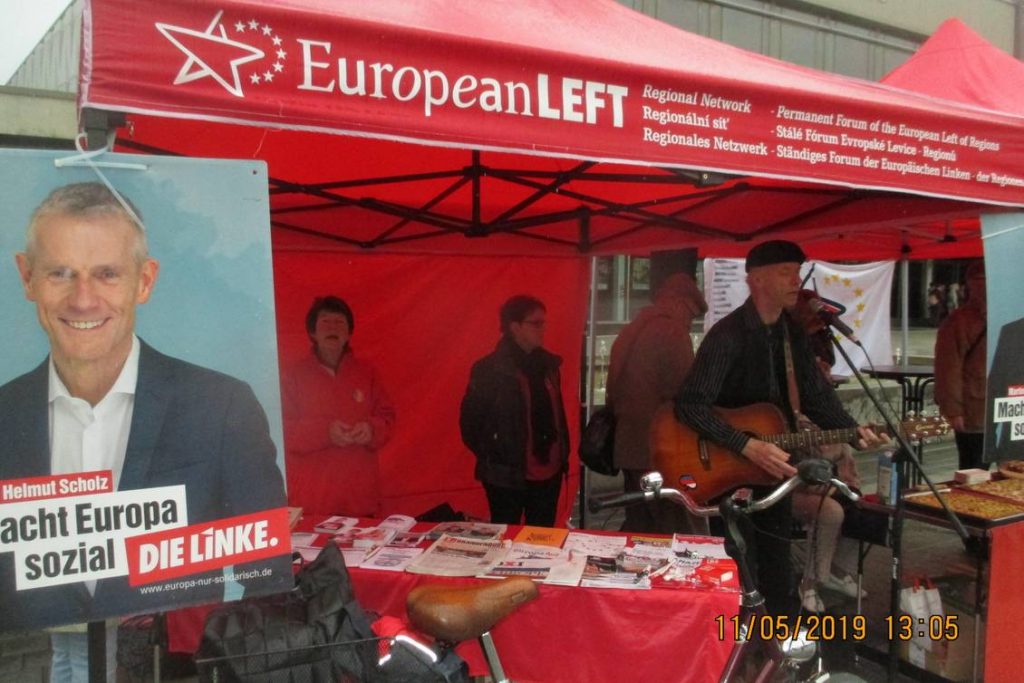
The highest success for the Left came in the 2014 European Parliament elections. The group’s numbers increased by 50% and included 52 deputies. They noticeably strengthened their positions in the governing bodies of the European Parliament, receiving the post of the head of the Committee on Economic, Monetary and Social Policy, as well as 5 posts of deputy heads of committees.
The main success of the group was brought by the countries of Southern Europe, where the main growth was shown by Greece and Spain. In Greece, it was primarily SYRIZA, which received 26.6% in the elections and for the first time overtook the conservatives from New Democracy. As analysts noted at the time, SYRIZA’s electoral breakthrough was the active non-parliamentary work of its activists in social movements, criticism of the EU and its “austerity” measures, against the backdrop of the worst economic crisis in Greece. And of course, charismatic leaders – party head Alexis Tsipras, anti-fascist resistance hero Manolis Glezos, as well as a former athlete, javelin thrower and migrant worker from Bulgaria who created a union of cleaners and was attacked with acid for her activities.
The success of the left in Spain was ensured by the third-place United Left, which took 6 seats, and the fourth-place party Podemos (We Can), which won 5 seats. Then the whole Europe started talking about the phenomenon of Podemos. The party was created a few months before the elections by a group of left-wing activists and intellectuals. Pablo Iglesias, a university lecturer, TV presenter and well-known critic of austerity measures in the country, stood out among the leaders of the new party, inspired by the example of the Greek leftist coalition SYRIZA and its leader Alexis Tsipras. “Podemos” is the brainchild of the “Indignados” (“Indignados”) Movement, which emerged in 2011 when thousands of Spaniards took to the streets to protest austerity measures. Pablo and his colleagues, political science professors at Complutense University in Madrid, saw an opportunity to transform this protest into an alternative political movement. “Podemos demonstrated new principles of party structure based on horizontal rather than vertical coordination. Formally, the party had no office or leadership, and operated through representative offices of the movement’s supporters, a kind of political clubs where people argued and discussed problems. In the top five of the Podemos list, except for 78-year-old Carlos Jiménez Villarejo (a former prosecutor with left-wing democratic views who became known for his fight against money laundering), all the others were between 32 and 36 years old.
In Ireland, a split among Trotskyist parties led to the failure of the Socialist Party, which had been there in the previous legislature, to get into the European Parliament, but this was offset by increased support for the left-nationalist Sinn Féin Party, which was once the political wing of the IRA but has now embraced democratic socialism. It won 19.5% of the vote and 3 seats in the European Parliament. In Italy, “The Other Europe”, a left-wing electoral list in support of the candidacy of SYRIZA leader Alexis Tsipras, nominated by the PEL for the post of President of the European Commission, received 4.03% and 3 seats, which meant the return of representatives of the Italian left-radicals to the European Parliament after five years of absence. Also, the Finnish Left Union returned to the European Parliament with 9.3% of the vote (5.93% in 2009). In Belgium, support for the Labor Party increased from 1.04% to 3.51%, but this was not enough to get into the European Parliament. Finally, in Slovenia, protests against the austerity measures of 2012-2013 contributed to the emergence of new left-radical parties – United Left (5.47%) and Solidarity (1.67%), but, as in the case of Belgium, these votes were not enough to gain representation in the European Parliament.
The election results showed that the map of electoral preferences shows pronounced regional shades. First, these are the countries of Western Europe and Scandinavia, where left-radical parties tend to have support in the order of 4-10% and a small representation in the national /or European Parliament (Belgium, Denmark, France, Germany, the Netherlands, Luxembourg, as well as Sweden and Finland). Second, the Mediterranean and Atlantic peripheries, which have become the vanguard of influence and support for left-radical parties. Third, Eastern Europe, where there are virtually no strong left-radical parties. Left-radical forces have the greatest support in the Czech Republic, and have been joined in recent years by Slovenia, with virtually none in Poland, Hungary, Romania and the Baltic states. Ironically, however, success in the 2014 elections was in fact a prologue to future failure in the 2019 elections.
In the five years since the 2014 elections, the EU has witnessed a number of major events: the 2015-2016 migration crisis, the 2016 referendum on the UK’s exit from the EU, the EU-US trade conflict, as well as a number of other major upheavals. All of them contributed to the growth of Eurosceptic sentiments in the EU countries, and in this sense could have directed electoral views towards the left-radical camp. However, the left failed to seize the chance.
Their campaign in 2019 has been sluggish, and their electoral program unclear and unattractive. Especially on the key issues on the agenda: the fight against the uncontrolled influx of migrants into Europe, the widening gap between living standards in the old and new EU countries, the option of resolving the intra-European conflict with Poland and Hungary (over the interpretation of the principles of democracy) and foreign policy with the EU’s traditional partner, the United States of America. The elections ended with a huge collapse of the Party of the European Left, which had half as many members as the left-populists, eco-socialists and communists who were outside the PEL party structure.
It is worth noting that the losers in the 2019 European Parliament elections were not only the radical left. Sensitive blows were also received by representatives of other left-wing forces. So the Social Democrats in their EP political group “Progressive Alliance of Socialists and Democrats” lost 41 mandates. At the same time, the extreme right, despite the inflated expectations, did not significantly strengthen their positions. But the real winners of the elections were the Greens and the Liberals, who hit the jackpot. The Alliance of Liberals and Democrats for Europe won 40 more mandates than in 2014, while the Greens increased their group by another 20 seats.
The steady trend of outflow of supporters and voters for the left and center-left in most EU countries continues to be threatening. In many cases, conservative, right-populist and extreme right-wing forces have managed to “intercept” a significant part of the left electorate by offering values that are more in line with and understandable to former left-wing voters. The positions defended by most of the left and center-left parties on migration, the fight against crime, family policy, and the “green transition” are increasingly at odds with the views of a significant part of the electorate in European countries.
European Parliament Elections 2024: New Challenges for the Left
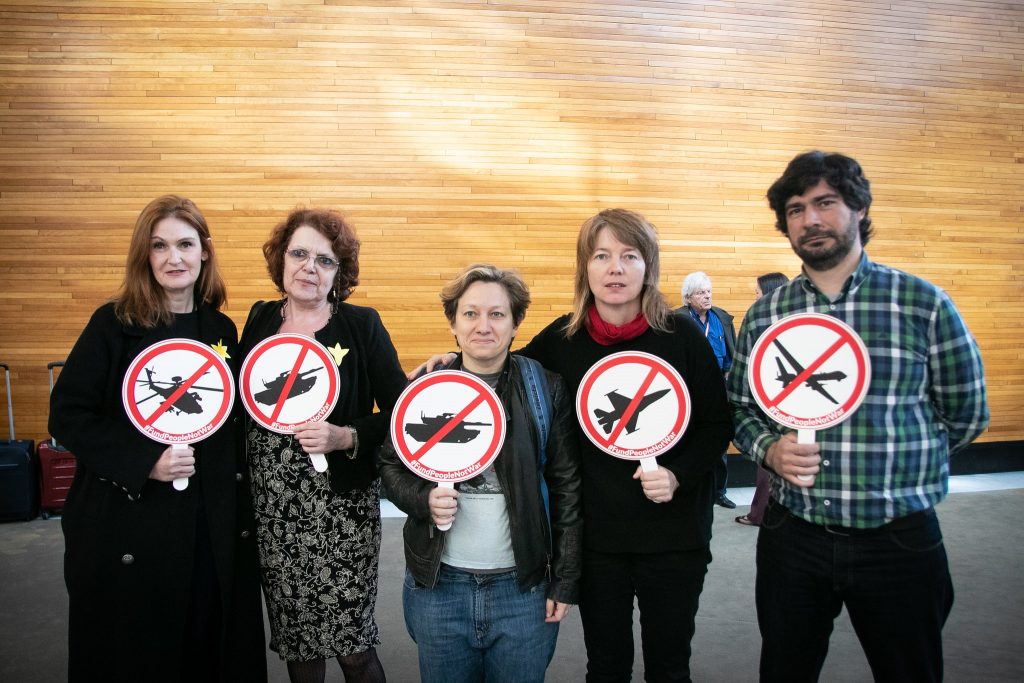
Less than a month before the elections, it seems that the radical left has not drawn any serious conclusions from its defeat in the last European elections. Against the backdrop of a growing right-wing turn in Europe, the left wing continues to weaken and most parties are in a state of “disarray. Disunity and fragmentation only intensify the crisis. As before, the Party of the European Left and the international red-flag team of France, Germany, Spain, Greece, Ireland, Sweden and Belgium will vie for supremacy on the left wing.
The Party of the European Left was the first to get off to a flying start, as it gathered for its congress in February 2024 for the European Parliament elections. The leading candidate of the PEL at the congress in Ljubljana was the head of the party, Walter Bayer. Thus, the 70-year-old politician became a contender for the post of European Commission President. However, Bayer’s chances of heading the European Commission are slim. His name will not appear on any national list, so he will most likely not even become a member of the European Parliament. The former Austrian communist considers his main task to stop the rise of extreme right-wing forces in the European Union. PEL’s information agenda for the European elections will be built around preventing climate change, respecting the working class, limiting the rise in rental prices – these are just some of the proposals that the European Left party has presented for the new EU authorities. Despite the ostensible optimism about the upcoming elections to the European Parliament, which came from the Party of the European Left, many experts believe that these elections will be the political sunset of the PEL. To be convinced of this, it is enough to take a look at the state of affairs in the party structures of its members.
Germany’s leftist tragedy and a surprise from Sarah Wagenknecht
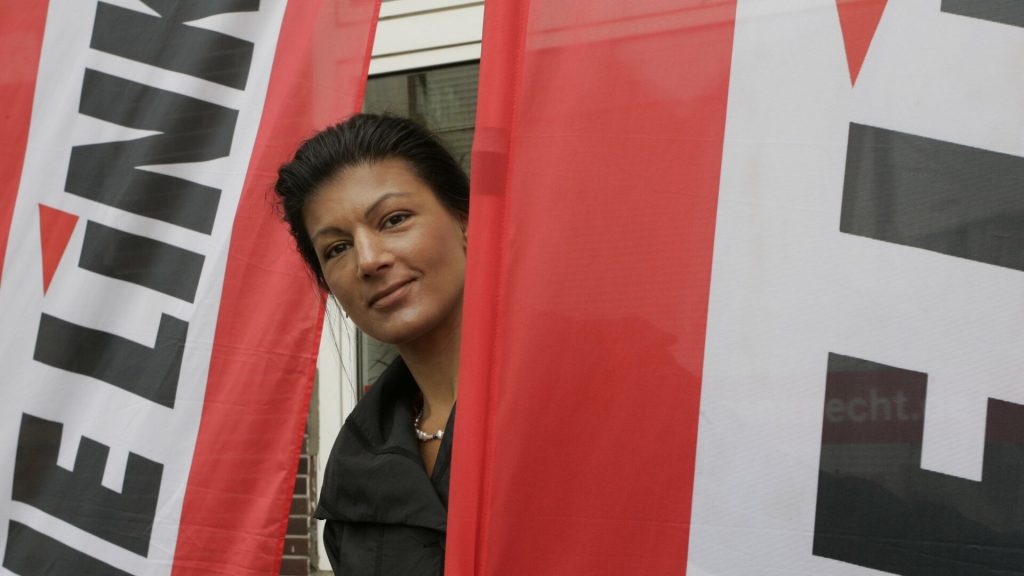
Let’s start with the countries that give the largest number of mandates in the European elections. Germany has the largest quota of deputies among all countries – 96 mandates in the European Parliament. The main electoral “donor” of the PEL for a long time, was the Left Party of Germany. At the last elections to the European Parliament in 2019, it replenished the “piggy bank” of the left in the EP with 5 mandates. And today analysts of the European Union on the basis of available polls predict the German Left all the same 5 seats in the European Parliament. The only big question is whether the Left Party of Germany will win them.
Today, it is experiencing a deep and systemic crisis, the consequence of which may one day be the final withdrawal of the party from the political arena. Therefore, many experts rightly predict a fiasco for the party in the European Parliament elections, and if it “lives to see it”, also in the next Bundestag elections in 2025.
The first alarm bell sounded for the Left Party of Germany (LPG) back in 2021, when it received 4.9 percent of the vote in the last Bundestag elections and failed to break the five percent threshold. It was only thanks to three straight man-dates in the constituencies – Gregor Gysi and Gesine Leetsch won the election in Berlin and Zehren Pellmann won in Leipzig – that the Left became the sixth faction in the German parliament.
Next came the land elections, in which the Left Party found itself in an extremely dismal situation. In none of the states where elections were held in 2022 did the post-socialists manage to pass the five percent threshold. The situation looked particularly bleak for the left in Saarland. The party lost more than 10 percent of the vote and gained only 2.6 percent. By comparison, in the 2009 elections, the party scored 21.3%, making it the third force in the Landtag. Another serious blow for the Left Party was the resignation of one of its founders and former leader Oskar Lafontaine, who, incidentally, is the 80-year-old husband of another “party star” of the Left – Sarah Wagenknecht, who will be discussed below.
Explaining his decision, the famous politician said, “I wanted there to be an alternative to the politics of social insecurity and inequality in the political spectrum, which is why I co-founded the Left Party. Today’s leftists have abandoned this goal.” The following year, 2023, the Left continued its sad tradition of failing to break the 5% barrier. This time it happened in the land elections in Bavaria and Hesse. However, the main “surprise” awaited the Left Party of Germany at the end of the year, when one of the most popular and most extraordinary representatives of the Left, Sarah Wagenknecht, left the party and created her own political project – the party “Sarah Wagenknecht’s Union for Reason and Justice” (BSW). Wagenknecht cited the degradation of the Left Party and the lack of support for her ideas and initiatives, including the “Rise for Peace” – a mass action against arms supplies to Ukraine in February 2023 – as the main reasons for creating her own party. Wagenknecht’s activities were repeatedly criticized within the LPG, even leading to calls to expel her from the party. Eventually, in June 2023, the party leadership demanded that she surrender her parliamentary mandate, which Sarah Wagenknecht pragmatically refused to do.
Therefore, the creation of a new party looks like a logical step for Wagenknecht, given her personal popularity. “Sarah Wagenknecht’s Union” positions itself as an ultra-left-wing party in economic policy, but right-wing in social policy. This gives her the opportunity to fight for both right-wing and left-wing voters. Sarah Wagenknecht consistently opposes “uncontrolled immigration and constantly criticizes the German government for allocating budget funds for Ukrainian refugees. The BSW leader also considers the German government’s climate policy to be wrong.
It also differs from all German political forces on the issue of Russia’s aggression against Ukraine. BSW opposes arms supplies to Ukraine and advocates the immediate start of peace talks between Kiev and Moscow. Now the program of the Wagenknecht Party is based on the manifesto of the association of the same name, and they want to develop a detailed agenda with the participation of party members and experts for the next parliamentary elections in Germany in 2025. In June, the party will take part in the European Parliament elections. The next stage is the fall elections in the three federal states of Saxony, Thuringia and Brandenburg. The AdG is strong there, and Sarah Wagenknecht intends to fight the right-wing populists on their field.
After the party’s presentation, an Insa poll for the Bild newspaper, conducted in January 2024, gave BSW 14% of voter support. Today, however, the mood towards Sarah Wegenknecht’s Union does not look so optimistic. The latest ZDF-Politbarometer poll, conducted in April, notes that Sarah Wagenknecht barely passes the 5% threshold, while the Left Party of Germany will be left out of the European Parliament altogether. However, if Sarah Wagenknecht gets into the EP, the German Left will retain its 5 mandates in the European Parliament, but whether the political group “European United Left/Left-Green North” will get 5 deputies from Germany remains an open question.
Unite to break up
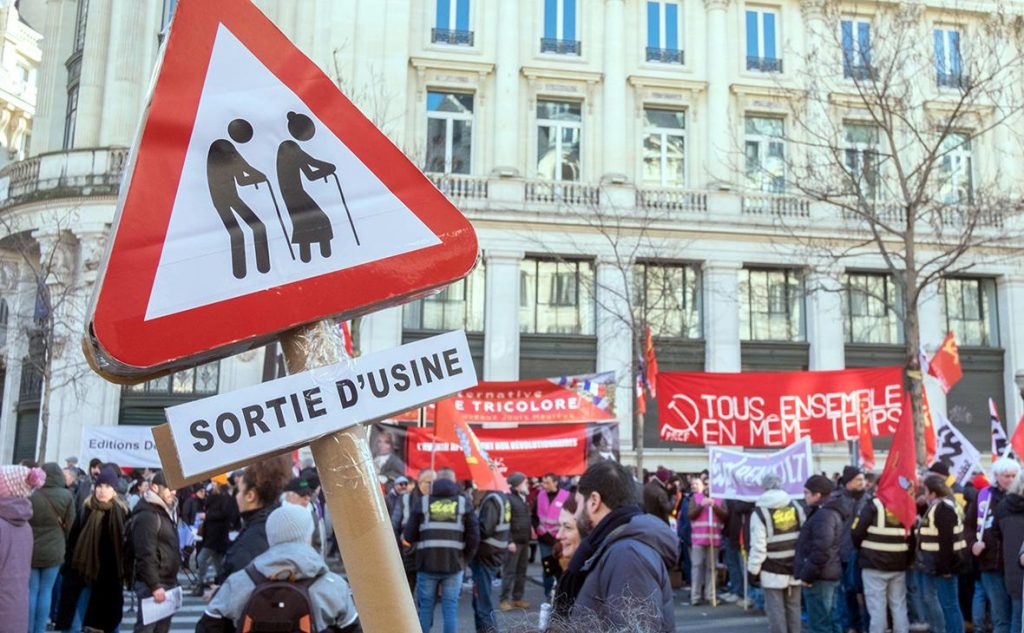
The surprise of the 2022 presidential election was not only the high percentage of votes that Marine Le Pen received in the second round (41.45%), but also the unexpected success of Jean-Luc Melanchon (21.95%), the leader of the extreme left-wing “Unruly France”, who almost made it to the final, only slightly losing to the leader of the “Rassemblement Nationale” in the first round of the election. An important feature of the 2022 presidential election was the high support among French people who went to the polls for the “protest candidates.” Marine Le Pen, Jean-Luc Melanchon and Eric Zemmour together won 52.17% of the vote in the first round. For comparison: in 2002, in the first round of elections, the “non-system” participants in the presidential race received 29.6%. Mélenchon tried to develop his success in the elections to the French National Assembly, which were held after the presidential race. The main intrigue of these elections was the question: will President Macron retain an absolute majority in the parliament or not?
Melanchon, who saw a “window of opportunity” for success in the parliamentary elections in the creation of a coalition of left-wing parties. The process of unification of left-wing parties in European politics is extremely rare, but where it happens, as a rule, success awaits them. This happened in Spain, where the left united to pass a vote of no confidence in the conservative government and create conditions for the formation of a socialist government in 2018. In Sweden to preserve the center-left government in early 2019, in Portugal in 2015, when the support of the radical left parties was needed for a socialist cabinet.
At the same time, in France, left-wing forces have not united since 1997, and the call for such action now seems most timely. Left-wing opposition parties have begun talks of joint action in the hope of controlling parliament and depriving Macron of his majority and thus preventing him from implementing liberal reforms. On May 4, 2022, the Europe-Écologie-Les-Verts/EELV, the French Communist Party (PCF), and the Socialist Party (PS) signed an agreement with Jean-Luc Melanchon’s La France Insoumise party. Thus, the left wing formed a coalition called the New People’s Ecological and Social Union (NUPES).
It is important to note that the prerequisites for the creation of a left-wing alliance were ripe. Each of the parties had serious problems with getting into the parliament. The Socialists were on the verge of existence as an independent political force. The disappointing results of François Hollande’s rule (2012-2017), the growing popularity of “Unruly France” and especially the creation of a new centrist formation “Forward, Republic!” by Emmanuel Macron, who had been a member of the FSP for a short time, were a knockout blow for the Socialists. The French Greens, who have been gaining political weight over the past decade thanks to the popularity of their environmental agenda, also contributed to their collapse.
Nevertheless, despite the good results obtained in the 2019 Euro elections, the outcome of the 2022 presidential campaign was a sobering shower for the “environmentalists”, pushing them to join the leftist NUPES bloc. In the end, none of the coalition members miscalculated. The leftist Nupes, led by Jean-Luc Melanchon, became the second largest group in the National Assembly with 131 deputies. And although Melanchon did not realize his prime ministerial ambitions, but significantly strengthened the position of his party in parliament. “Unconquered France” received 72 mandates and became the third largest party faction in the Bourbon Palace, after the presidential “Renaissance” (formerly “Forward, Republic!”, renamed in the run-up to the elections) and the party of Marine Le Pen. But the most important outcome of the election was Macron’s loss of an absolute majority in parliament.
Unlike the far-right Rassemblement Nationale, the left-wing NUPES coalition in parliament did not retain its unity, but scattered into party apartments. The representatives of Mélenchon’s “Unconquered France”, the Socialists, the “environmentalists” and the Communists retained their autonomous parliamentary factions. Jean-Luc Mélenchon offered his allies to act in parliament as a united front, promising rotation of the group’s chairman and other guarantees of independence, but the PCF Communists, PS Socialists and EELV Greens who were elected with him refused to do so, not unreasonably believing that the main force of Mélenchon’s LFI “Unconquered France” bloc would simply swallow them. So the real weight of NUPES in the parliament turned out to be different from the total number of seats it won.
The doubts of many experts, dating back to 2022, that NUPES 2.0 will be presented at the upcoming European Parliament elections have been justified. For these elections, each of the parties is going in a separate column. The former coalitionists have already submitted their lists for the elections. There are 81 names on it, as many as the number of seats allocated to France in the EP. The list of “Unconquered France” is headed by the current co-chair of the EP group “European United Left/Green Left of the North” (GUE-NGL) Manon Aubry, the list of the party “Europe-Ecology-Greens” (EELV) is headed by Marie Toussaint. The French Socialists will be led in the “battle” by Raphael Gücksmann and the French Communists by Léon Deffontaine.
It is important to note that the election campaign in France, which is in full swing, shows that “Unconquered France”, by focusing its agenda on the topic of the Israeli-Palestinian conflict and condemnation of Israel, does not add to the electoral plan. Jean-Luc Melanchon himself is now concentrating on three main groups of voters. These are the extreme leftist university youth, who enthusiastically greet his inspiring denunciations of the retrogrades in education and the state apparatus in general; these are the youth of the suburbs, who rejoice at his invectives against the authorities and the police, who prevent them from living “according to the rules”; these are the Islamists, who listen to his anti-Israeli and pro-Palestinian rhetoric, seeing him as the only one close to the real, authoritative politicians of France.
According to experts, this position of Melanchon makes him an ideal match for Marine Le Pen: it is against his background that the ideas of “National Unification” seem to be the most advantageous. This, by the way, is confirmed by the results of the latest poll published on April 24 and conducted on behalf of Le Figaro newspaper, LCI TV channel and Sud Radio by the IFOP-Fiducial team of public opinion researchers. The head of the Rassemblement Nationale (RN) list, Jordaan Bardelle, has almost twice as many potential voters as his closest rival, the candidate of the Renaissance presidential bloc, Valérie Aye. For her, 17% of respondents are ready to vote, and for Bardelle (the new head of the party) – 31.5%. Well, the representative of “Unconquered France” Manon Aubry has a modest 7%, which leaves Melanchon’s team with the same 6 mandates as in the elections to the European Parliament in 2019.
The Italian left: from Bella Ciao to Arrivederchi

In the countries of the European South, left-wing forces have always played a more prominent role than the “average” on the continent. An obvious exception to this background is Italy, where the radical left has long been in decline and does not particularly influence the country’s politics.
For those who are familiar with Italian political history of the twentieth century, who love and appreciate Italian culture and cinema, it is hardly surprising that after World War II the leftist and labor movement played a crucial role in the Italian state. Italy had the largest and most well-organized Communist Party in Western Europe, leftist parties received the support of more than 40% of the electorate in elections, and most organized workers in turn belonged to leftist-controlled trade unions. The Italian left, with its cooperatives, “people’s houses,” mass social organizations, and “red” town halls, represented a distinct sociopolitical culture at various levels of public life. In the last three decades, however, all this has gone nowhere.
After the Italian Communist Party ceased to exist in 1991, some of its members joined the social-democratic Democratic Party of the Left, which was part of the center-left Olive Tree coalition. And then on its basis in 2007 the Democratic Party was created. Another part of the members of the former Italian Communist Party joined the left-radicalist Party of Communist Revival, which, incidentally, is part of the Party of the European Left. For a while, however, the Communist Revival Party did regain what it had in the past. It consistently demonstrated support in the parliament at the level of 8-10%, had a good representation in the regions, and it seemed that the party would achieve changes. It tried to unite old-school Communists and young people, who, although they disliked the old-fashioned traditions of their older comrades in the party, were even more disgusted by social-democratic conformism and their affiliation with the establishment.
However, in 2006, after cooperating with the government of the Democratic Party led by Giuliano Prodi, it changed completely by voting for neoliberal reforms. But the most striking moment of the shift away from the left was the party faction’s vote in favor of the Italian army’s participation in the war in Afghanistan. This vote essentially destroyed the left as a parliamentary force and had a demoralizing effect on its supporters. Part of the PCV members moved to the Left, Ecology, Freedom party, which positioned itself to the left of the Social Democrats, but supported the Democratic Party in everything. The modest results of the Left, Ecology, Freedom party led to the creation in 2017 of a very heterogeneous party, the Italian Left, which, as part of the Free and Equal electoral bloc, achieved some success in the 2018 parliamentary elections: 3.4% of the electorate voted for it, which won it 14 seats in the Chamber of Deputies.
The gaining momentum of the extreme right, led by Giorgi Meloni, has become a real threat to the center-left in the extraordinary parliamentary elections of 2022. In order to stop the rightists, the left has joined together in a coalition led by the center-left of Enrico Letti’s “Democratic Party”. “The Italian Left, along with its Greens partners, joined the center-left coalition and fielded 37 candidates in separate districts. Another ultra-leftist force, the “Communist Renaissance Party”, together with a number of other radical leftist associations, formed the electoral bloc “People’s Union”. The list was headed by Luigi de Magistris, former mayor of Naples and leader of the left-populist party “Democracy and Autonomy”. The NS had virtually no chance to break into parliament. The elections ended with the triumph of Giorgi Meloni and her Brothers of Italy, who won 119 seats in parliament. The Alliance of Greens and Leftists got 12 seats, while the Party of Communist Renaissance once again flew past the parliament.
The upcoming elections to the European Parliament in 2024 also leave little chance for the Italian radical leftists to get into the EP, and to join the ranks of the political group “European Left/Left-Green Alliance of the North”. However, the Red-Green Alliance, which, as noted above, was created on the eve of the parliamentary elections in 2022, has a hope of getting into the European Parliament. In the hope of overcoming the 4% barrier, the leaders of the “Left” Nicola Fratoianni and his “green” alliance partner Angelo Bonelli “chip” of the campaign made the nomination from their party as a candidate for the European Parliament arrested in Hungary Ilaria Salis. The 39-year-old schoolteacher and anti-fascist activist has been imprisoned in Hungary for almost a year. She is accused of attacking two alleged neo-Nazis in Budapest, last February. The woman is taken to court hearings with handcuffs around her wrists and ankles. A chain is even placed around her waist, held by a guard. The leader of the Red-Green Alliance and the head of the Italian Left (KZA) party told the press that Salis will be presented as the leader of the alliance’s list in the northeastern electoral district.
However, this “trick” of the “Red-Green Alliance” does not add to its rating yet. Research of the analytical center Cattaneo Institute, based on polls conducted in early April 2024, shows that only 20% of Italians agree with this step of the CPA, and the percentage of those who voted for the “Red-Green Alliance” still balances on the edge of 4%. If the CPA does pass the threshold, it can count on 3 seats in the Italian quota of 76 seats.
“Podemos”: from triumph to downfall
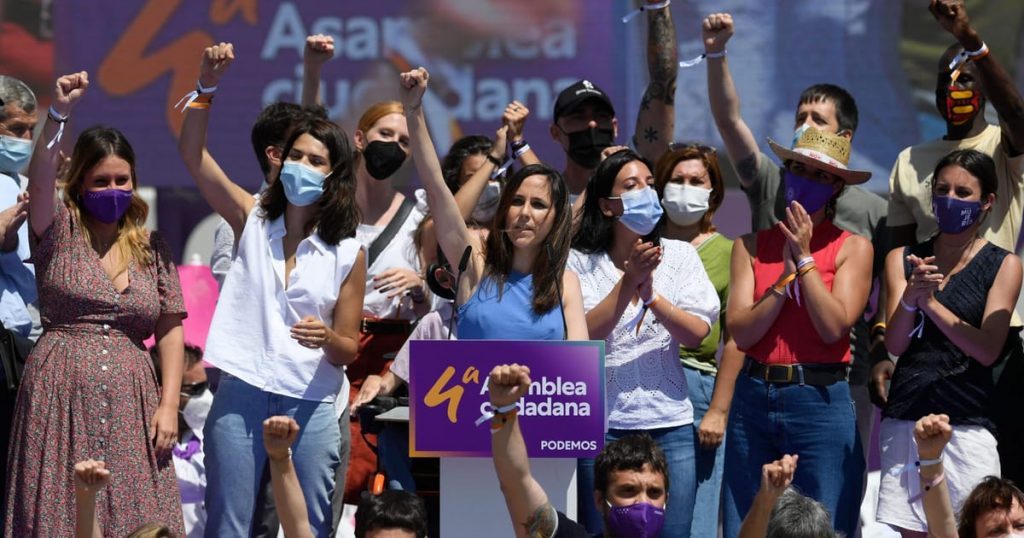
In Spain, however, there is a good chance that radical left-wing parties are likely to be left without representatives in the European Parliament. And this applies above all to the once legendary Podemos party, which emerged as a flash in the Spanish political sky, and after ten years is rolling towards its political extinction.
Speaking of Podemos’ initial successes, one cannot fail to note the effectiveness and novelty of its strategy, which did not fit only within a left-radical framework, but added populism to it. This allowed it to appeal to the average voter, who is concerned about deteriorating economic conditions and the crisis of democracy, but who does not necessarily support left-radical ideas. Podemos leader Pablo Iglesias wrote at the time that the use of a populist discourse was motivated by a desire to campaign on its own terms, not allowing Podemos to be trapped in the narrow confines of a left-radical discourse.
However, the party leadership then departed from the original strategy. In pursuit of power in the early parliamentary elections in Spain in 2016, Podemos did not go to the early parliamentary elections in Spain on its own, but as part of a coalition with the United Left, which became known as Unidos Podemos. It would seem that the start was not bad. The new coalition won 13% of the popular vote and a record 45 mandates. It would seem that the correctness of the leadership’s decision was confirmed by the excellent result in the elections. However, there is always another side of the coin. The party’s entry into power led to an exodus of some voters. By becoming part of the system it criticized, Podemos lost its competitive advantage, and the increasing centralizing tendencies in the party contradicted its attempt to establish horizontal ties. Among Podemos’ weaknesses, experts began to point to its lack of regional representation and ideological flexibility, which proved problematic in the long run: Podemos was unable to secure the part of the electorate that voted for it as a result of protest. Finally, Podemos was unable to draw a clear line separating it from Social Democracy.
In addition, a conflict was brewing within the party’s leadership between its “founding fathers”, Pablo Iglesias and Iñigo Errejón. This conflict has also been described as a conflict between traditional left-radical and populist ideologies. Errejón did not support an alliance with the post-communist United Left party, believing that this would lock Podemos into a left-radical party position. Iñigo Errejón believed that it was necessary to soften the statements in order to attract the potential electorate of the Spanish Socialist Workers Party (PSOE) and focus on parliamentary work. Finally, in January 2019, Iñigo Errejón announced his decision to stand in Madrid’s municipal elections as the candidate of the electoral platform More Madrid (Más Madrid) rather than Unidos Podemos. This came against the backdrop of the unexpected success of the right-wing VOX party, which came third and received 15.1% of the vote, while Unidos Podemos won only 12.8%.
In the regional elections, the results were also disappointing. In Madrid, Unidos Podemos came only fifth with 7.2% of the vote. Its rivals on the left, More Madrid and PSOE, garnered 17.0% and 16.9% respectively. Unidos Podemos lost marginally in the November 2019 early parliamentary elections, winning 35 seats in parliament, losing 7 seats compared to the last election. Nevertheless, the bitterness of the electoral failure was mitigated by the government portfolio that Pablo Iglesias received in the second cabinet of Socialist Pedro Sánchez. He became Deputy Prime Minister and Minister of Social Rights.
A year later, he left the government and participated in the Madrid Assembly elections. In the elections in the Autonomous Community of Madrid, the Podemos party won 10 out of 136 mandates (7.5% of the vote), after which leader Pablo Iglesias resigned. The party was led by Ione Bellara, who had previously replaced Iglesias as Minister of Social Rights. It must be said that the departure of the charismatic Iglesias did not pass without a trace. On the eve of the 2023 parliamentary elections, Iglesias’ former colleague in the Unidos Podemos coalition, a representative of the United Left and deputy prime minister in the Sagchese government, Yolanda Diaz, formed another leftist party, Sumar. Diaz had her own resonances. The weakening of Podemos, after the departure of Iglesias allowed her to take control of almost the entire left flank, except for the Catalans to the results of the elections to be included in the bidding for the government portfolio. After King Phillip VI of Spain dissolved the Cortes Generales, “regular” extraordinary parliamentary elections were held on May 30, 2023.
As a junior partner, Podemos joined the Sumar coalition. It also included the United Left, the center-left Mas Pais and a number of other small left-wing parties, which nominated Yolanda Diaz for prime minister. In the end, the Sumar coalition came fourth in the election with 12.31% and 31 mandates. But for the regional elections of 2023, the parties went in different columns. And if Sumar literally “scratched” mandates, but overcame the threshold, Podemos was a complete failure. It completely lost its deputies in the Basque Country, Galicia, the Valencian Community, the Balearic and Canary Islands, Aragon, La Rioja and Navarra, leaving insignificant representation in ten regional parliaments of Spain.
After the break with Sumar Yolanda Diaz and the exit of Ione Bellaro from the government, the parties are going separately for the European elections of 2024. The European list of Podemos is headed by Irene Montero, the wife of the former leader and another “founding father” of the party, Pablo Iglesias, who, incidentally, is actively helping his wife in the elections. So far, judging by all appearances, without much success. In a CIS poll conducted in late April under the leadership of Jose Felix Tezanos, which was published by the Spanish newspaper “20 Minutes” in “Podemos” 2.6% of voter support and the party does not pass the 3% barrier. Things are much better for Sumar, which has the support of 7.2% of voters. Thus, the political group in the European Parliament “European United Left/Green Left of the North” is likely to lose four mandates, which were at Podemos in the last elections, because Sumar does not want to join the group to the left, and wants to join the European Greens. As for another Spanish leftist party, which had its representative in the European Parliament – “United Left”, then dissolved in blocs and coalitions its current rating is at the level of statistical error. So, the forecast of European analysts that the Spanish left in the EP will be represented by five mandates, today look like a fantasy.
SYRIZA is but an echo of former glory.

The example of another ultra-leftist party-legend, the Greek SYRIZA, is also evidence that European radical-left projects are moving toward their demise. Ten years ago, the Coalition of the Radical Left – SYRIZA made a sensation in the political life of Europe, gaining 36% in the 2015 national elections and winning 149 seats out of 300 in the parliament, with its leader Alex Tsipras heading the government. SYRIZA came to power amid Greek dissatisfaction with the EU’s “austerity measures” to address their country’s debt crisis. And despite all the promises of SYRIZA’s 4.5 years in power, not counting a slight drop in unemployment and some stabilization of the national banking system, the Greek economy still gave no reason for optimism. The Greek electorate’s widespread disillusionment and fatigue with Tsipras’ protracted populist agenda predetermined SYRIZA’s defeat in the European Parliament elections, local and then early parliamentary elections in 2019. In these elections, Tsipras’s party, although gaining 31.9%, lost power to the center-right New Democracy of Kyriakos Mitsotakis. But as it turned out, this was only the beginning of the decline in the ratings of the political left wing.
In the 2023 early parliamentary elections, SYRIZA suffered a crushing defeat with only 17.8% and 47 parliamentary seats. By comparison, the first-place finisher, the ruling New Democracy, won 40% and 158 seats in parliament. The results of the election also determined the fate of its leader Alexis Tsipras, who resigned as party chairman. Stefanos Kasselakis, 35, a former employee of the investment bank Goldman Sachs who had little political experience before, was elected as the new head of SYRIZA. Kasselakis spent more than twenty years in the United States and worked as a volunteer in the 2008 U.S. Democratic Party primaries for then-Senator Joe Biden.
The election of a banker as leader of the once anti-capitalist party and his intention to move the party closer to the center led to an internal crisis. Three intraparty groups, including more than 100 Central Committee members, 11 MPs and 3 Euro MPs, broke away from SYRIZA and announced the creation of a new political project, the New Left. Alexis Haritsis became the leader of the new party and Dimitris Papadimoulis represents it in the European Parliament. In their statement, the New Left defined themselves as “European”, “ecological” and “modern left”. Today they are actively campaigning for the European Parliament, building their campaign on criticism of the ruling New Democracy party and their former colleagues from SYRIZA.
According to sociological polls, they can count on 7-8% of voters’ support and 1-2 seats in the new convocation of the European Parliament. SYRIZA has the same chances of getting into the European Parliament. The once powerful left-radical project is rolling to the political finish line. The Communist Party of Greece, which now has two MEPs, has also a chance of getting into the European Parliament, but it keeps itself separate, not being a member of any of the political groups. Its agenda is to fight imperialism, the US, NATO and its direct rivals on the left wing – SYRIZA and the New Left, which the CPG considers to be projects of the “insidious” West. Taking into account its “nuclear” electorate and the data of the latest polls, in which it gains 7.6% of the votes, the Communist team of Dimitris Koutsoumbas can retain its two representatives in the European Parliament.
And other leftists…
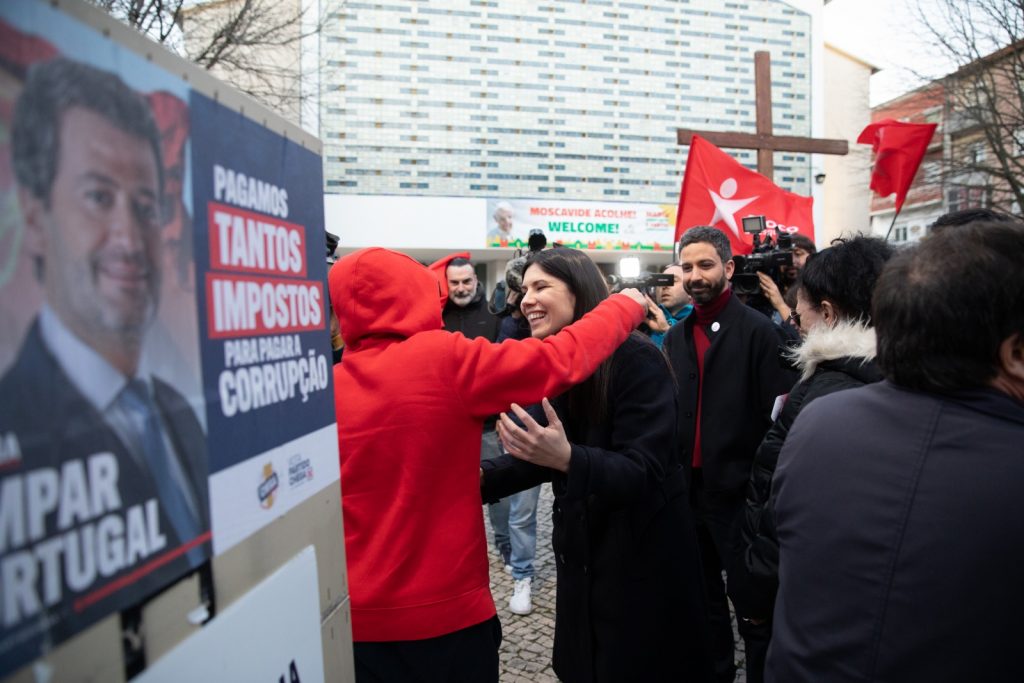
In the context of studying the left-radical flank of the European Union, it is worth paying attention to other representatives of the European left, who are members of the “European United Left/Green-Left North” (GUE-NGL) in the European Parliament. European analysts are giving disappointing forecasts to the Portuguese Left, which may get only one mandate. At the end of the 2019 European Parliament elections, the Left Bloc (Bloco de Esquerda), part of the Party of the European Left, had two MEPs. Taking into account the results of the last parliamentary elections held in March 2024, in which the Left Bloc gained only 4.4% and the latest opinion poll published in the Lisbon edition of Express shows that the party is on the verge of passing to the EP, it is likely that the party’s representation will be reduced to one deputy. Another left-wing political project, the Portuguese Communist Party, is likely to say goodbye to its two seats in the European Parliament with a 99.9% probability. The electoral support for the Coalition of Democratic Unity, which includes the CPP, has been steadily declining. At the last parliamentary elections in March 2024, they scored 3.2%, which gives them a very slim chance of getting at least one member of the European Parliament.
The Left Union of Finland (1 mandate) is likely to retain its representation in the left-wing group of the European Parliament following the election results. The Communist Party of Czech Republic and Moravia, which is going to the elections as part of the coalition “Stacilo” (“It was enough”) and headed by the current MEP Katerina Konieczna, is expected to gain 6.7% and also retain its seat in the EP. The Left Party of Sweden, which currently has 1 mandate in the European Parliament, will also retain its representation. The current leader of the party, Nushi Dadgostar, a Swede of Iranian descent, who is remembered for being one of the few to oppose Sweden’s entry into NATO and for actively attacking Israel for bombing residential neighborhoods in Gaza, is desperately fighting for it. In Sweden’s parliamentary elections in 2022, Dadgostar’s party scored 6.7% and won 24 Riksdag seats.
Unexpectedly, the Progressive Party of the Working People of Cyprus (AKEL), which is part of the European Left Party as an observer, may lose one of its two mandates today. The results of the last elections in 2021 and today’s opinion polls, published in the oldest Cypriot newspaper Liberal, fix its rating at 20%. With a seemingly high percentage of support for AKEL, Cyprus’ small quota of 6 seats for all parties in the European Parliament does not allow the Cypriot Communists to expect a higher result.
On the other hand, positive surprises for the radical left may occur in Belgium and Ireland. Against the backdrop of the rightward turn in Belgium, the ultra-leftist Party of Labor (PVDA) is showing enviable success. Unlike many other Belgian parties, which are ethno-regional, the Labor Party is an all-Belgian project. The party made a loud statement five years ago in the 2019 parliamentary elections. The PVDA performed well, gaining 8.62% and winning 12 seats in parliament. To this we can add 1 MEP seat in the EP elections. In the time since the elections, the party has not only retained its voters but has also gained new sympathizers, especially among the youth. Even a year before the elections to the European Parliament and the national parliament, and they are held on the same day in 2024, many experts argued that only the Labor Party would be a serious competition to the extreme right parties. In fact, that is exactly what is happening.
Today, two far-right parties – the Flemish Interest (Vlaams Belang, VB) and the New Flemish Alliance (N-VA) – are firmly at the head of the electoral peloton in Belgium. As noted by the Belgian newspaper De Standaard, referring to the polling data of RTBF and La Libre Belgique: Vlaams Belang has 26% of electoral support, N-VA-20%. Third place, with 12.2%, goes to the Labor Party, which has left behind such well-known political brands in Belgium as Vooruit, which until 2021 was called the Socialist Party of Wallonia (PS) and the Christian Democrats and Flemish. (CD&V). So, the European United Left group in the European Parliament can at least count on three more mandates.
An interesting situation has developed in Ireland, where the left-radical nationalist party Sinn Féin may win a convincing victory in the elections to the European Parliament. It has already been mentioned above about the extraordinary history of this party, which during the years of conflict in Northern Ireland was closely linked to the “Provisional Irish Republican Army” and was its political wing. Both organizations trace their origins back to the Sinn Féin party founded in 1905 by Arthur Griffith. Sinn Fein means “we ourselves” in Irish Gaelic. Time has passed and the party is ruled by politicians with no connection to the rebel past. Michelle O’Neill leads it in Northern Ireland and Mary Lou McDonald is the leader of the opposition in the Irish Republic.
The party and its leader Mary Lou McDonald caused Ireland’s first political tsunami in 2020, when Sinn Fein won 24.5% of voter support and the highest number of votes in a parliamentary election. The two centrist parties – Fianna Fail and Fine Gael – that have ruled Ireland since it gained independence from Britain a century ago were left behind. Yet electoral success, as is often the case, does not translate into power. Such was the case with Sinn Féin, which failed to form a government coalition and remained in opposition.
In 2022, left-wing nationalists caused a second tsunami, this time in the Northern Ireland elections, where Sinn Féin, which advocates a united Ireland, won the first place in the elections for the first time in its 100-year history. It is worth noting that the party built its agenda on economic issues without emphasizing ethno-religious issues to voters. Among the main election themes were rising prices amid the war in Ukraine, as well as delays in shipments of British products to the region due to the creation of a customs border in the Irish Sea because of Brexit. Sinn Féin eventually won the election and 27 seats in the local parliament.
However, she was able to convert her victory into a seat in power only two years later. The fact is that the leading opposition party, the Democratic Unionist Party (DUP), for a long time refused to enter the government as a sign of protest against trade rules after Brexit. It was only after two years of negotiations, when the UK government allayed their fears, that the DUP agreed to enter government, thus ending the political impasse. Michelle O’Neill has become Northern Ireland’s first minister, and her party boss Mary Lou McDonald is preparing for the European Parliament elections and the upcoming 2025 parliamentary elections. Raising the degree of mobilization of her electorate, she stresses that if she comes to power, she will not give up her main goal – the reunification of Northern Ireland and Ireland. At the same time, she denied that such intentions could spoil the country’s relations with London.
“Depends on who you talk to. I’m sure the Conservatives won’t be happy. But we’re not very happy with the Conservatives either. So it’s like a draw,” she noted. There will also be parliamentary elections in Great Britain in 2024, and the likelihood of Labor winning them is very high. This means that in 2025, if she wins the election, Mary Lou McDonald could have a more constructive dialog with London. In the meantime, polls conducted in Ireland by Ipsos B&A, which were published by The Irish Times in March 2024, show that support for Sinn Féin, Ireland’s most popular party, has fallen to 27%, its lowest level in three years. Six months ago it was supported by 35% of voters. Nevertheless, the party is still comfortably ahead of the center-right Fianna Fáil and Fine Gael (by 8 and 9 percentage points respectively), which are now part of the government coalition.
For the past two years, Sinn Féin has been ahead of the two parties in the Irish government coalition by at least 10 percentage points, making it a prospect of forming a government after the next parliamentary elections in early 2025. Sinn Féin’s diminishing advantage – even despite its relative popularity – makes coalition formation much more difficult. However, this advantage also allows Sinn Féin to win the elections to the European Parliament and get four MPs into the left-wing e political group.
As we can see, despite the general trend of declining popularity of European left-radical parties, there are still “islands of hope”, where political forces not only win elections, but also participate in the formation of government. However, for the left, this is only a pleasant exception to the rule, not a trend.


